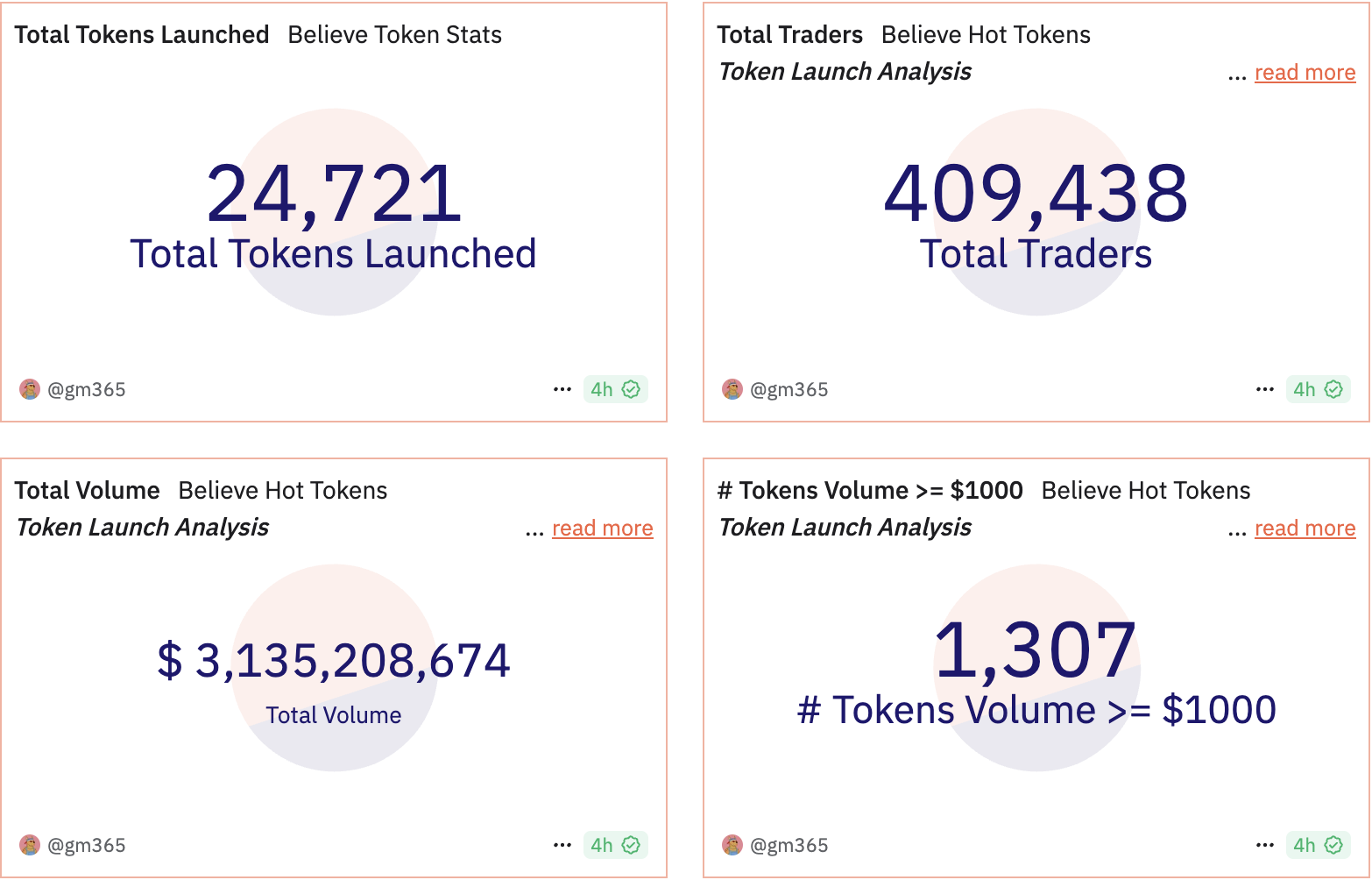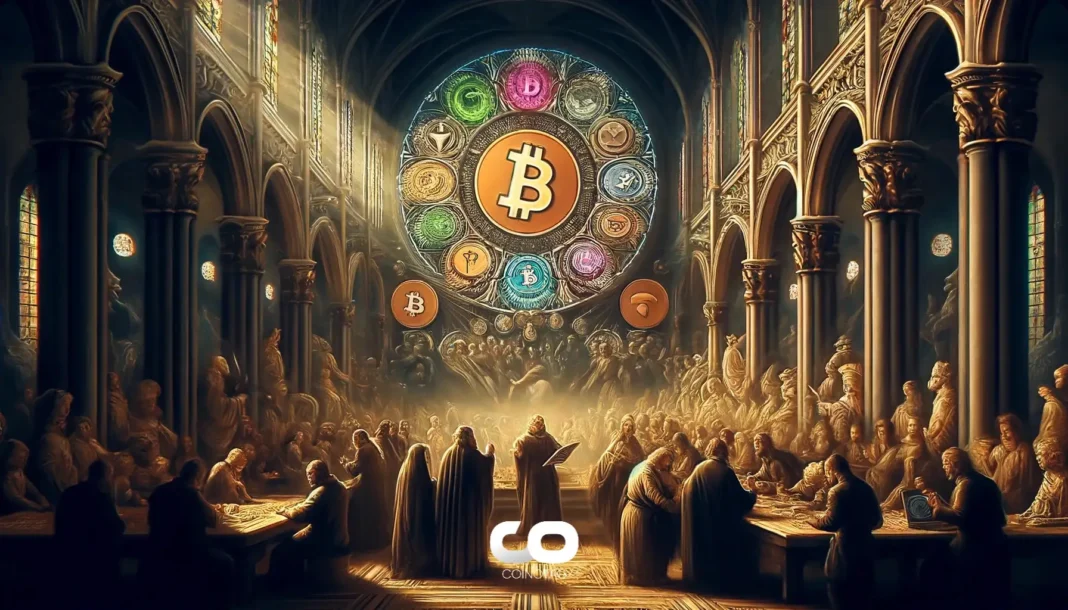| COINOTAG recommends • Exchange signup |
| 💹 Trade with pro tools |
| Fast execution, robust charts, clean risk controls. |
| 👉 Open account → |
| COINOTAG recommends • Exchange signup |
| 🚀 Smooth orders, clear control |
| Advanced order types and market depth in one view. |
| 👉 Create account → |
| COINOTAG recommends • Exchange signup |
| 📈 Clarity in volatile markets |
| Plan entries & exits, manage positions with discipline. |
| 👉 Sign up → |
| COINOTAG recommends • Exchange signup |
| ⚡ Speed, depth, reliability |
| Execute confidently when timing matters. |
| 👉 Open account → |
| COINOTAG recommends • Exchange signup |
| 🧭 A focused workflow for traders |
| Alerts, watchlists, and a repeatable process. |
| 👉 Get started → |
| COINOTAG recommends • Exchange signup |
| ✅ Data‑driven decisions |
| Focus on process—not noise. |
| 👉 Sign up → |
-
Believe’s recent policy changes spark discussions about quality control in the booming meme coin market.
-
The platform’s shift to manual token reviews aims to enhance project legitimacy amidst explosive trading growth.
-
As stated in the community forums, a user pointed out, “it’s a high-stakes game where quality meets quantity.”
Believe’s policy shifts raise critical questions about project quality and community engagement as it dominates the meme coin ecosystem.
Adjustments to Listing Protocols: A Double-Edged Sword
On May 22, Believe announced a pause on automatic token listings on its Launchcoin account, moving towards a manual review process. The intent was to ensure quality control akin to the App Store’s standards. Projects now require submission through Believe’s website for rigorous scrutiny, reinforcing the platform’s commitment to filtering out subpar entries.
Despite this intention, within hours, Believe reversed its decision to reinstate instantaneous listings. However, projects lacking a robust operational strategy—such as active products—will face restrictions on fee claims. This juxtaposition of policy indicates the pressure Believe faces in a competitive environment.
The “Verified” Label: Striving for Credibility
In place of the previous “Featured” label, Believe unveiled a “Verified” tag. While it aims to recognize serious projects, it does not guarantee legitimacy, raising questions about user trust. The platform states community feedback will play a pivotal role in monitoring projects going forward.
| COINOTAG recommends • Professional traders group |
| 💎 Join a professional trading community |
| Work with senior traders, research‑backed setups, and risk‑first frameworks. |
| 👉 Join the group → |
| COINOTAG recommends • Professional traders group |
| 📊 Transparent performance, real process |
| Spot strategies with documented months of triple‑digit runs during strong trends; futures plans use defined R:R and sizing. |
| 👉 Get access → |
| COINOTAG recommends • Professional traders group |
| 🧭 Research → Plan → Execute |
| Daily levels, watchlists, and post‑trade reviews to build consistency. |
| 👉 Join now → |
| COINOTAG recommends • Professional traders group |
| 🛡️ Risk comes first |
| Sizing methods, invalidation rules, and R‑multiples baked into every plan. |
| 👉 Start today → |
| COINOTAG recommends • Professional traders group |
| 🧠 Learn the “why” behind each trade |
| Live breakdowns, playbooks, and framework‑first education. |
| 👉 Join the group → |
| COINOTAG recommends • Professional traders group |
| 🚀 Insider • APEX • INNER CIRCLE |
| Choose the depth you need—tools, coaching, and member rooms. |
| 👉 Explore tiers → |
Market Positioning Amid Competition
Believe’s rapid ascent in the meme coin arena, marked by a $3.1 billion trading volume, positions it as a key player among Solana-based launchpads. According to Dune Analytics, it commands a significant 22.9% share of daily active addresses, trailing only Pump.fun.

| COINOTAG recommends • Exchange signup |
| 📈 Clear interface, precise orders |
| Sharp entries & exits with actionable alerts. |
| 👉 Create free account → |
| COINOTAG recommends • Exchange signup |
| 🧠 Smarter tools. Better decisions. |
| Depth analytics and risk features in one view. |
| 👉 Sign up → |
| COINOTAG recommends • Exchange signup |
| 🎯 Take control of entries & exits |
| Set alerts, define stops, execute consistently. |
| 👉 Open account → |
| COINOTAG recommends • Exchange signup |
| 🛠️ From idea to execution |
| Turn setups into plans with practical order types. |
| 👉 Join now → |
| COINOTAG recommends • Exchange signup |
| 📋 Trade your plan |
| Watchlists and routing that support focus. |
| 👉 Get started → |
| COINOTAG recommends • Exchange signup |
| 📊 Precision without the noise |
| Data‑first workflows for active traders. |
| 👉 Sign up → |
Its successful promotion of tokens, such as LAUNCHCOIN, indicates a robust mechanism for attracting traders. However, the swift policy reversals raise concerns of increasing vulnerability to low-quality entries that could dilute market integrity.

| COINOTAG recommends • Traders club |
| ⚡ Futures with discipline |
| Defined R:R, pre‑set invalidation, execution checklists. |
| 👉 Join the club → |
| COINOTAG recommends • Traders club |
| 🎯 Spot strategies that compound |
| Momentum & accumulation frameworks managed with clear risk. |
| 👉 Get access → |
| COINOTAG recommends • Traders club |
| 🏛️ APEX tier for serious traders |
| Deep dives, analyst Q&A, and accountability sprints. |
| 👉 Explore APEX → |
| COINOTAG recommends • Traders club |
| 📈 Real‑time market structure |
| Key levels, liquidity zones, and actionable context. |
| 👉 Join now → |
| COINOTAG recommends • Traders club |
| 🔔 Smart alerts, not noise |
| Context‑rich notifications tied to plans and risk—never hype. |
| 👉 Get access → |
| COINOTAG recommends • Traders club |
| 🤝 Peer review & coaching |
| Hands‑on feedback that sharpens execution and risk control. |
| 👉 Join the club → |
While striving to maintain balance between rapid growth and project quality, the platform’s maneuvers may inadvertently pressure it to concede to external demands. Community feedback, while valuable, could lead to inconsistent evaluations without established parameters.
Community Sentiment and Future Implications
Feedback from the community remains divided regarding Believe’s new policies. Some users express concerns over the potential for bias in project listings, indicating the risk of favored projects overshadowing genuine talent.
Statements from users reveal a sentiment of skepticism: “Only good projects will launch now, but will they be accessible to the average investor?” This underscores the necessity for transparent mechanisms to ensure fair access amidst market manipulation pretexts.
The evolving landscape of the meme coin market demands adaptable yet firm strategies. As Believe navigates these waters, its policies will need constant reassessment to ensure sustainability and integrity.
| COINOTAG recommends • Exchange signup |
| 📈 Clear control for futures |
| Sizing, stops, and scenario planning tools. |
| 👉 Open futures account → |
| COINOTAG recommends • Exchange signup |
| 🧩 Structure your futures trades |
| Define entries & exits with advanced orders. |
| 👉 Sign up → |
| COINOTAG recommends • Exchange signup |
| 🛡️ Control volatility |
| Automate alerts and manage positions with discipline. |
| 👉 Get started → |
| COINOTAG recommends • Exchange signup |
| ⚙️ Execution you can rely on |
| Fast routing and meaningful depth insights. |
| 👉 Create account → |
| COINOTAG recommends • Exchange signup |
| 📒 Plan. Execute. Review. |
| Frameworks for consistent decision‑making. |
| 👉 Join now → |
| COINOTAG recommends • Exchange signup |
| 🧩 Choose clarity over complexity |
| Actionable, pro‑grade tools—no fluff. |
| 👉 Open account → |
Conclusion
In summary, Believe’s strategic revisions reflect its ambition to position itself as a trusted entity within the meme coin market. While the attempts to enhance project validation are notable, the rapid implementation reversals and community reliance present ongoing challenges. To uphold its burgeoning reputation, Believe must develop solid frameworks for maintaining project quality and user trust in the increasingly complex crypto ecosystem.
| COINOTAG recommends • Members‑only research |
| 📌 Curated setups, clearly explained |
| Entry, invalidation, targets, and R:R defined before execution. |
| 👉 Get access → |
| COINOTAG recommends • Members‑only research |
| 🧠 Data‑led decision making |
| Technical + flow + context synthesized into actionable plans. |
| 👉 Join now → |
| COINOTAG recommends • Members‑only research |
| 🧱 Consistency over hype |
| Repeatable rules, realistic expectations, and a calmer mindset. |
| 👉 Get access → |
| COINOTAG recommends • Members‑only research |
| 🕒 Patience is an edge |
| Wait for confirmation and manage risk with checklists. |
| 👉 Join now → |
| COINOTAG recommends • Members‑only research |
| 💼 Professional mentorship |
| Guidance from seasoned traders and structured feedback loops. |
| 👉 Get access → |
| COINOTAG recommends • Members‑only research |
| 🧮 Track • Review • Improve |
| Documented PnL tracking and post‑mortems to accelerate learning. |
| 👉 Join now → |








